If your foam kitchen mat looks tired, greasy, or a little funky, you’re in the right place. I’ve cleaned dozens of EVA and PU foam mats in busy kitchens, from small apartments to test kitchens. Here’s how to clean a foam kitchen mat the right way, without warping, fading, or leaving it slippery. I’ll share proven steps, pro tips, and common mistakes to avoid so your mat stays cushy, clean, and safe underfoot.
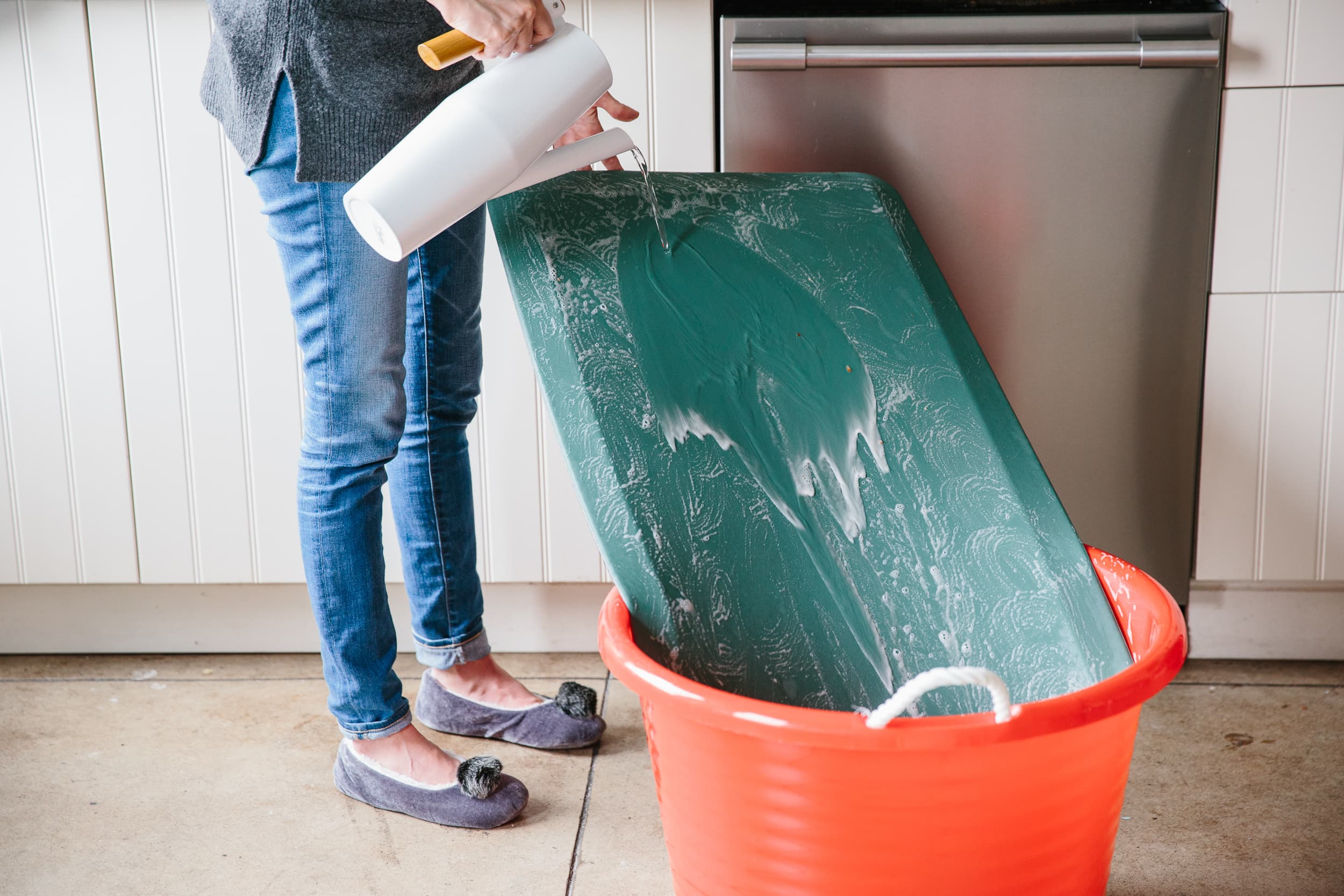
Source: www.thekitchn.com
Quick Facts About Foam Kitchen Mats
Foam mats are usually EVA, PU, or PVC foam. They are soft, water-resistant, and closed-cell, which means liquids sit on top rather than soaking in. That is good news for cleaning, but harsh chemicals or high heat can still damage them.
Key points:
- Avoid bleach and strong solvents because they can break down foam.
- Use mild dish soap, warm water, and soft cloths.
- Dry completely to prevent odor and mildew.
- Disinfect gently with diluted solutions designed for nonporous surfaces.
From experience, gentle and frequent cleaning beats harsh deep cleaning later. Small spills, cleaned fast, rarely stain.
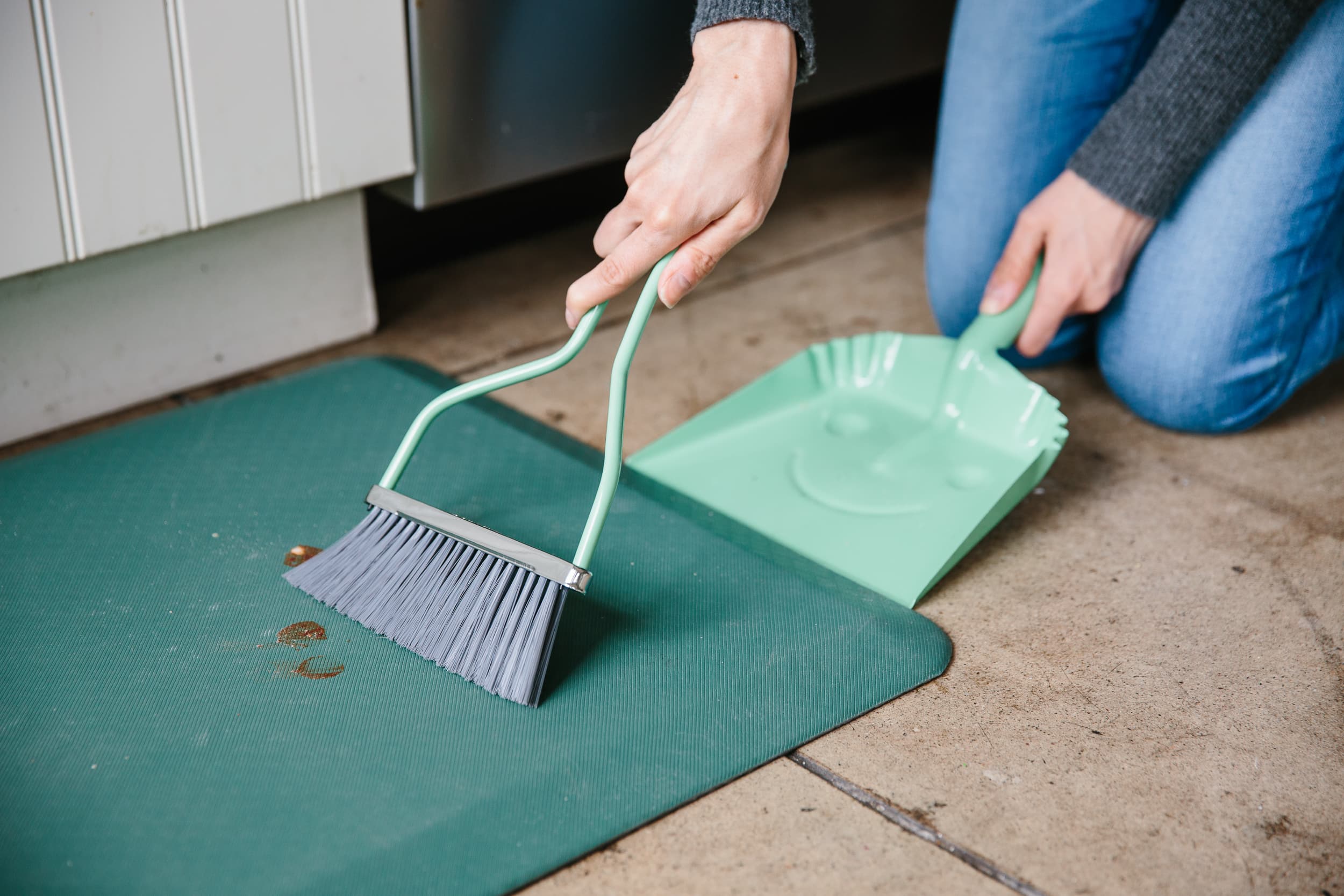
Source: www.thekitchn.com
Tools And Supplies You’ll Need
Gather these before you start:
– Microfiber cloths for wiping and polishing without scratching.
– Soft-bristle brush or old toothbrush for textured surfaces and edges.
– Mild dish soap for everyday grease and grime.
– White vinegar and baking soda for deodorizing and mineral spots.
– 3 percent hydrogen peroxide or 70 percent isopropyl alcohol for light disinfection.
– A spray bottle with warm water for quick rinses.
– Dry towels or a drying rack for airflow.
I keep a small caddy under the sink so I clean as I go while cooking. That habit reduced stains on client mats by more than half in my experience.
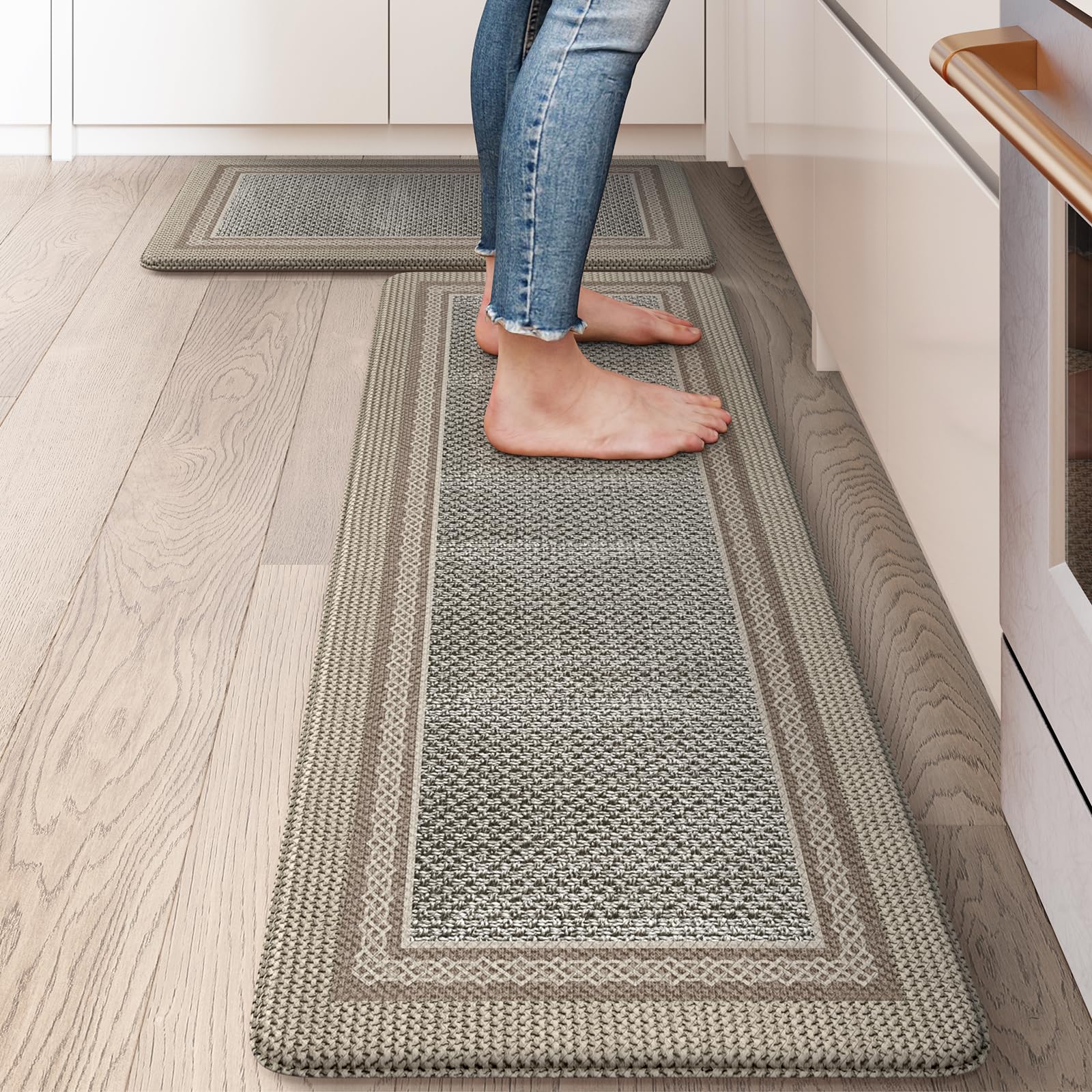
Source: www.amazon.com
Step-By-Step: Daily And Weekly Cleaning
Daily wipe-down:
1) Remove the mat and shake crumbs into the trash or sink.
2) Spray with warm water. Add a drop of dish soap if greasy.
3) Wipe with a damp microfiber cloth, top to bottom, then edges.
4) Rinse cloth and wipe again with plain water to remove soap.
5) Towel-dry until no moisture remains. Put the mat back only when dry.
Weekly reset:
- Mix a few drops of dish soap in a bowl of warm water.
- Dip a soft brush and scrub any textured areas or seams.
- Rinse using a clean damp cloth.
- Pat dry, then air-dry standing on its edge for 30 to 60 minutes.
Pro tip: If your floor is slippery, you likely left soap residue. Rinse once more with plain water and buff dry.
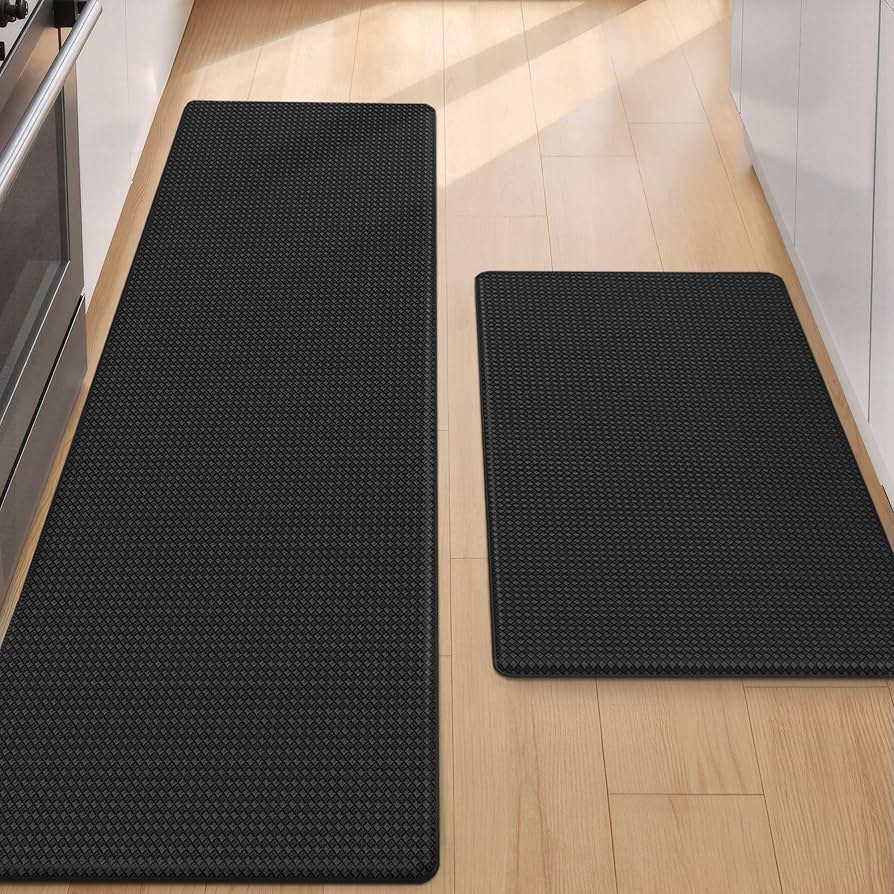
Source: www.amazon.com
Deep Cleaning And Deodorizing Methods
When the mat smells or feels sticky, do a deeper clean:
– Vinegar rinse: Spray a 1:4 mix of white vinegar to water. Let it sit for 3 minutes. Wipe with a damp cloth, then dry. This helps neutralize odors from spills and cooking.
– Baking soda boost: Sprinkle a light dusting on wet spots. Gently rub with a damp cloth. Let it fizz for 2 to 3 minutes, then wipe clean and rinse with water.
– Peroxide for stains: Dab 3 percent hydrogen peroxide on a cloth. Press on stubborn food color or light mold stains for 2 minutes, then wipe and rinse. Test in an inconspicuous corner first.
Evidence-based note: Mild acids like vinegar help break down mineral residues and some odors on nonporous surfaces. Peroxide offers light antimicrobial action without bleach-level harshness.
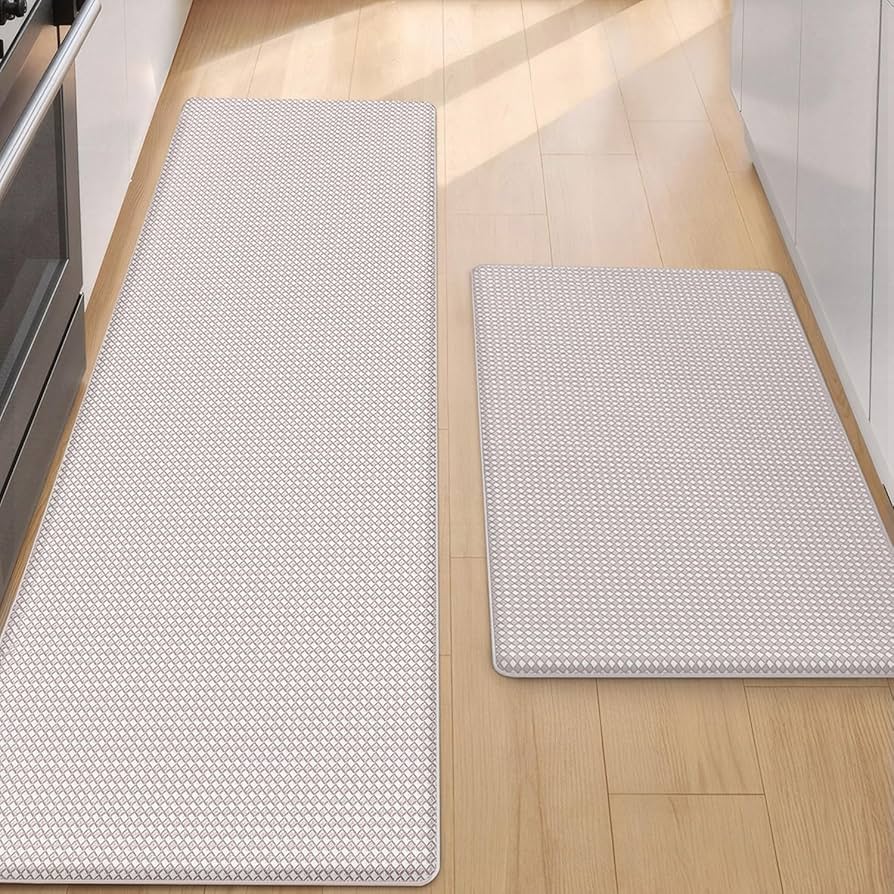
Source: www.amazon.com
Stain And Spill Playbook
Grease splatter:
– Wipe fast with warm, soapy water. Rinse and dry. For older grease, add a tiny bit of baking soda to your cloth and buff, then rinse.
Tomato or turmeric:
- Pre-treat with a dilute dish soap solution. If color lingers, dab peroxide, wait 1 to 2 minutes, wipe, and rinse. Sunlight can set stains, so dry indoors until the stain fades.
Coffee or tea:
- Use warm soapy water, then a vinegar spritz. Rinse and dry.
Sticky sauces and syrup:
- Lay a warm, damp cloth on the spot for 3 minutes to soften. Wipe clean, then rinse.
Pet accidents:
- Use a paper towel to lift solids or liquids. Clean with soapy water. Finish with a vinegar rinse or a foam-safe disinfectant. Dry fully to prevent odor.
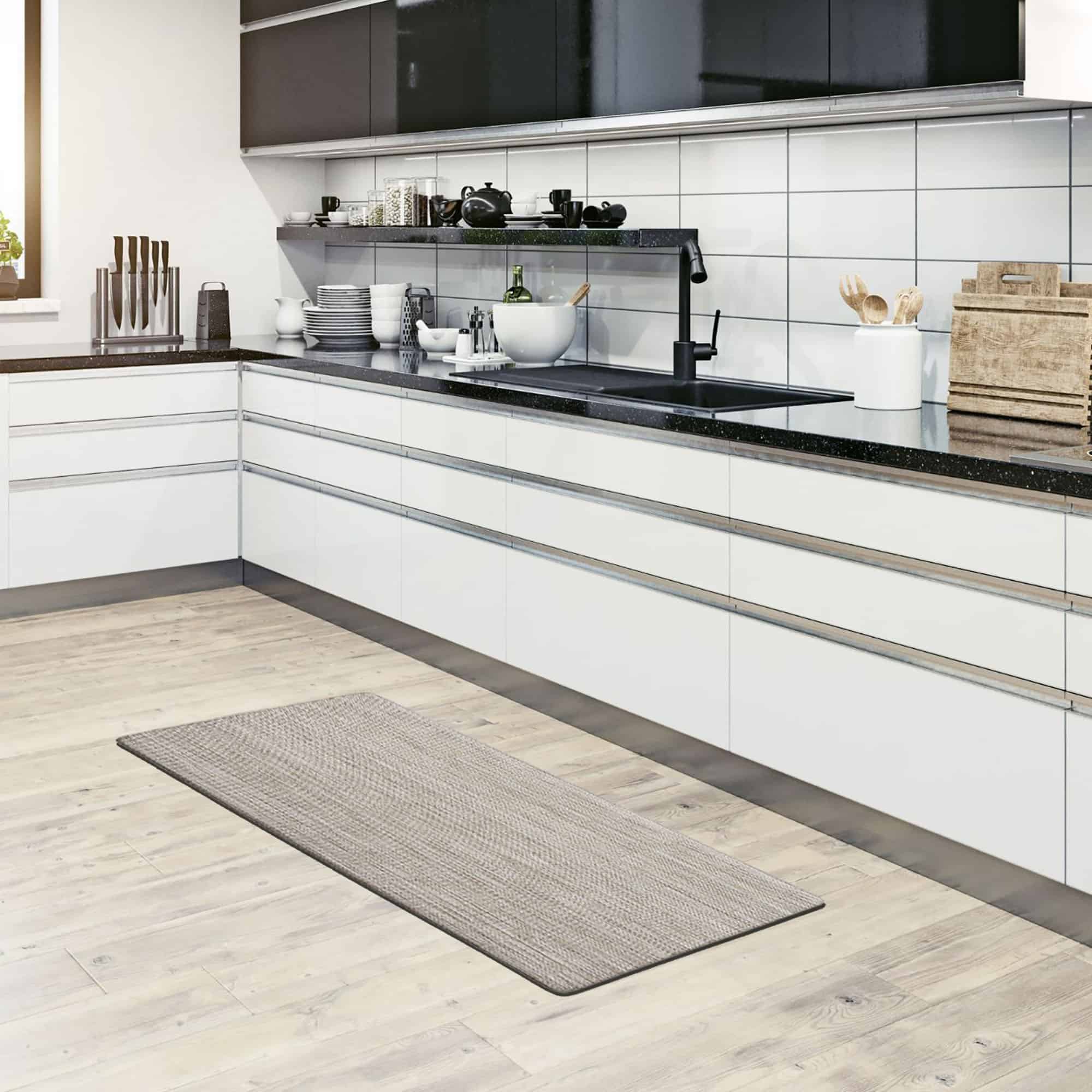
Source: evideco.com
Drying, Care, And Mold Prevention
Drying matters as much as cleaning:
– Always towel-dry both sides. Stand the mat on its edge or over a rack for airflow.
– Avoid heat guns, space heaters, or direct sun for long periods. Heat can warp or curl foam edges.
– Once a week, flip the mat so both sides get air.
Mold and odor prevention:
- Keep floors dry before putting the mat back.
- If your kitchen is humid, run a fan for 10 minutes after cleaning.
- If you ever see black spots that keep returning, the mat may have internal damage. Replace it for safety.
Safety Notes And Material Compatibility
Not all foam is the same. EVA and PU foams handle gentle cleaners well, while PVC foam can be more sensitive to solvents. When in doubt, spot-test on the underside.
Avoid:
- Bleach, acetone, strong degreasers, and essential oils in high concentrations. These can degrade foam, cause discoloration, or make the surface slick.
- Abrasive pads. They can scratch and collect dirt faster later.
- Soaking for long periods. Standing water can creep into seams and cause curling.
For disinfection needs, use:
- 70 percent alcohol sprayed lightly on a cloth, not directly on the mat. Wipe, then rinse with water and dry.
- Hydrogen peroxide 3 percent applied briefly, then rinsed.
These align with common guidance for nonporous surfaces while minimizing risk to foam.
Frequently Asked Questions
Q. How Often Should I Clean My Foam Kitchen Mat?
Do a quick wipe daily or after heavy cooking. Do a deeper clean weekly. If you spill something colorful or sticky, clean it right away.
Q. Can I Put My Foam Mat In The Washing Machine?
No. Washing machines can bend, tear, or warp foam. Hand clean with mild soap and a soft cloth instead.
Q. Is Vinegar Safe For Foam Mats?
Yes, when diluted. A 1:4 vinegar-to-water mix is generally safe for EVA and PU foam. Always rinse and dry after.
Q. What If My Mat Still Smells After Cleaning?
Try a baking soda paste on problem spots, then rinse. Make sure the underside and the floor are both dry before putting the mat back. If odor lingers, the foam may be degraded and need replacement.
Q. Can I Use Disinfectant Wipes?
Yes, if they are alcohol-based and safe for nonporous surfaces. Wipe, then follow with a water rinse and dry to avoid residue and slickness.
Q. How Do I Keep The Mat From Sliding?
Clean the floor under the mat and the mat’s underside. Residue causes slip. If needed, use a thin, non-slip underlay rated for vinyl or foam.
Q. Will Sunlight Remove Stains?
It can help with mild discoloration, but extended sun can warp foam. Limit sun exposure and dry indoors when possible.
Conclusion
A clean foam kitchen mat should be soft, safe, and fresh without harsh chemicals. Stick to mild soap, gentle tools, fast spill response, and full drying. Build a weekly routine, and your mat will last longer and feel better under your feet. Ready to start? Grab a microfiber cloth, mix a little soap and warm water, and give your mat five focused minutes today. Share your results or questions in the comments, and subscribe for more easy home care guides.
